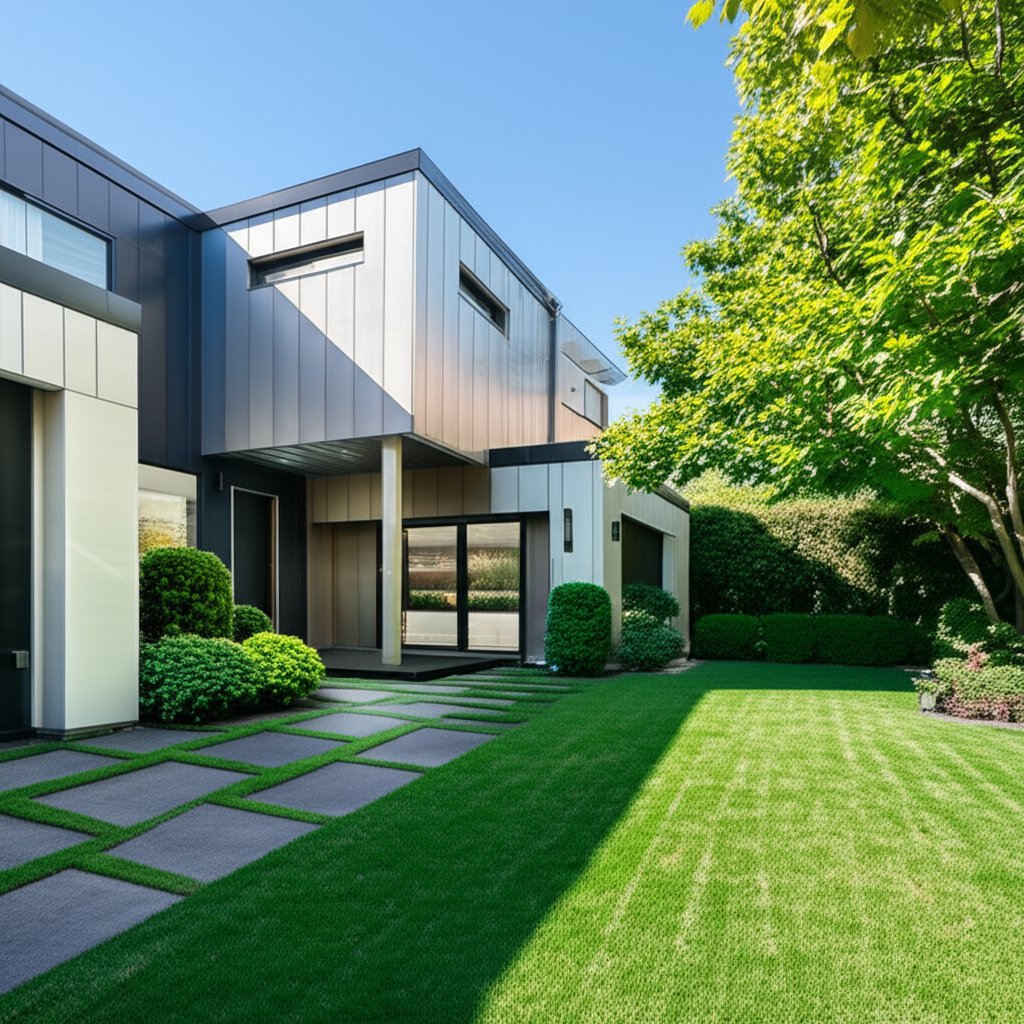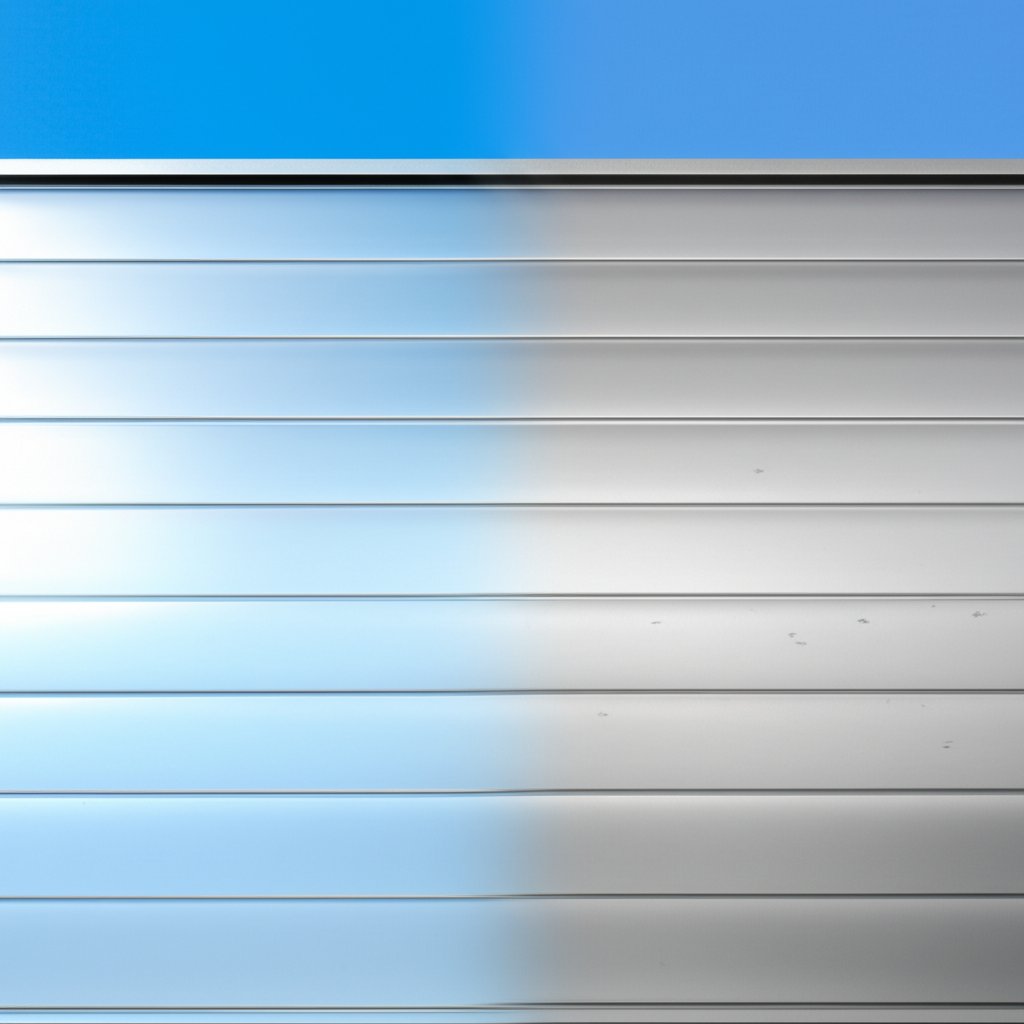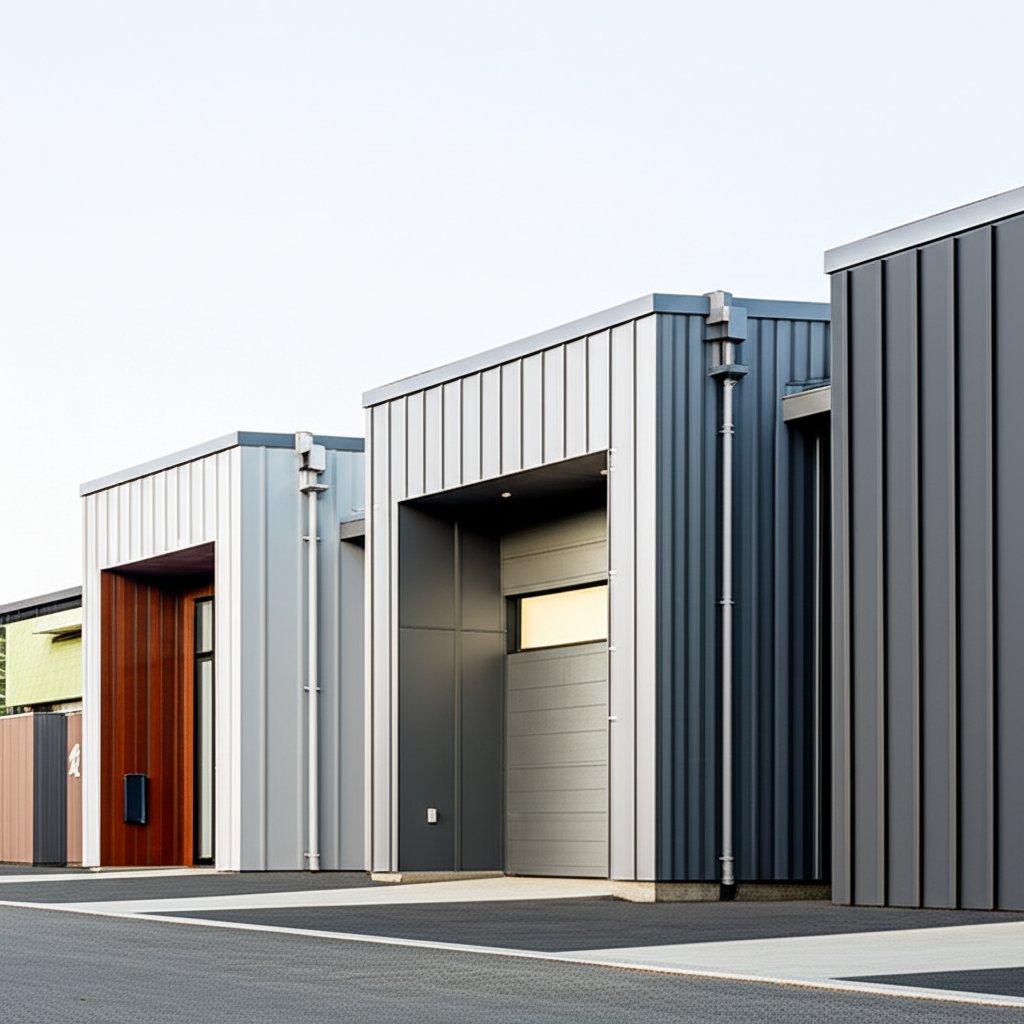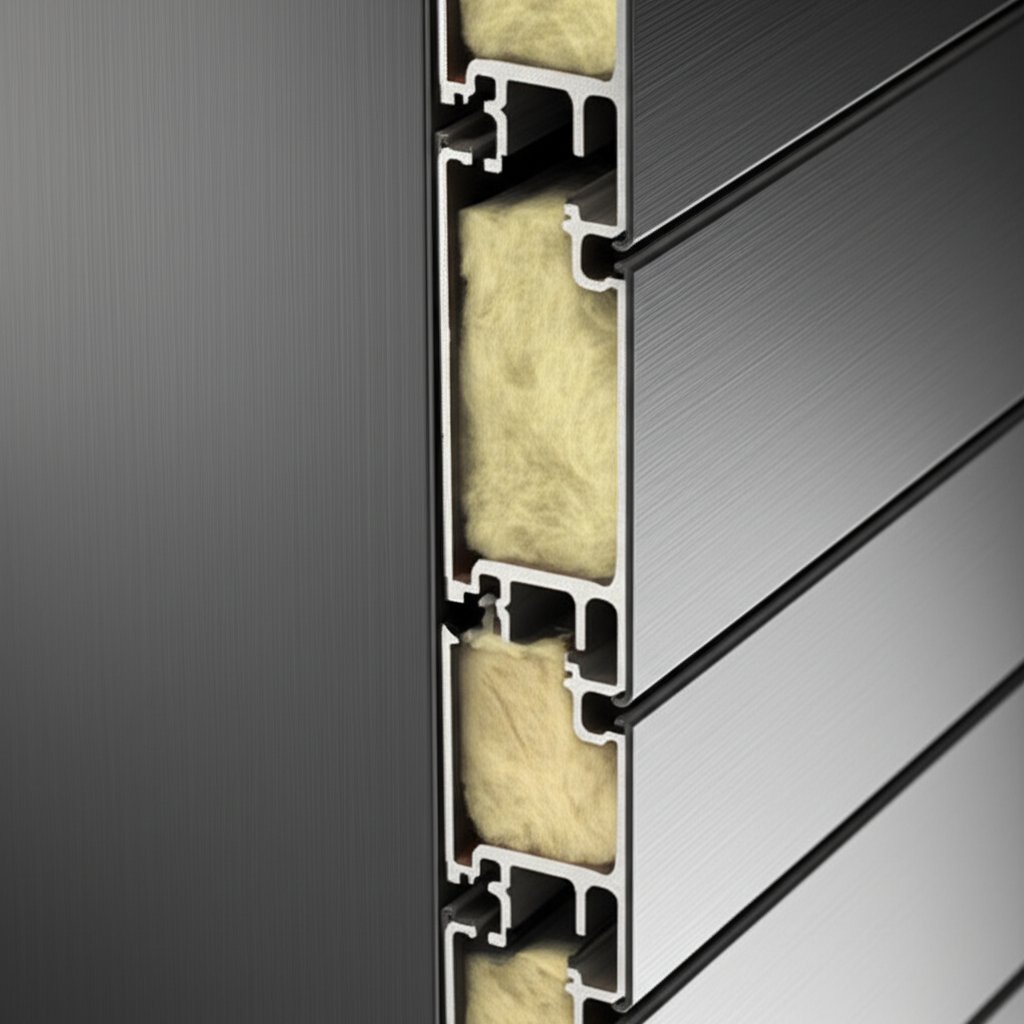
When you picture classic mid-century homes or the sleek lines of some modern builds, you might wonder: what is aluminum siding, and why does it keep coming up as a top option for exteriors? Let’s break down the essentials—starting from its roots to its role in today’s market.
Aluminum siding is a type of exterior cladding made from rolled or extruded aluminum panels, designed to protect and enhance the appearance of homes. First introduced in the late 1930s, it quickly became a favorite in American neighborhoods from the 1940s through the 1970s, especially as a solution to the high cost and maintenance of wood siding. You’ll still spot old aluminum siding on many vintage houses, a testament to its staying power.
With proper installation and minimal maintenance, aluminum siding can last 40–50 years or more, and it’s 100% recyclable at the end of its life.
If you’re asking, “is aluminum siding still available?”—the answer is yes. While vinyl has overtaken it in sheer popularity since the 1960s, aluminum house siding remains a reliable and relevant choice, especially in regions facing harsh weather or where fire resistance is a concern. Manufacturers continue to innovate, offering improved coatings, dent-resistant extrusions, and a wider palette of colors and textures.
Today, aluminium siding is chosen for its lightweight nature, resistance to rust and rot, and ease of installation. Its ability to mimic wood or deliver a modern, seamless look keeps it in demand for both new builds and renovations. If you’re considering replacing old aluminum siding, rest assured that modern options are not only still available but better than ever—combining durability, sustainability, and curb appeal.

When you’re weighing your options for exterior cladding, the big question on your mind might be: is aluminum siding good for today’s homes? To help you decide, let’s break down the honest pros and cons—backed by real-world experience and expert insights—so you can see if this material fits your needs and style.
Imagine a siding that stands up to harsh weather, requires little upkeep, and doesn’t attract pests. That’s the promise of quality aluminum products for your home’s exterior. Here are the standout advantages:
Of course, no siding is perfect. Here are some of the most common concerns homeowners express about aluminum house siding:
So, is aluminum siding good for your home? If you value low maintenance, fire resistance, and long-term durability—and can live with the possibility of a few dents or the need for occasional repainting—aluminum remains a smart, budget-friendly option. As you weigh these pros and cons, consider your climate, neighborhood style, and long-term plans. Next, let’s take a closer look at what you can expect to spend, and how aluminum stacks up against other popular siding materials.
When you start planning a home upgrade, one of the first questions you’ll probably ask is: how much is aluminum siding in today’s market? The answer isn’t as simple as a single number, but breaking down the costs can make budgeting much less overwhelming. Whether you’re replacing old panels or installing new cladding, understanding the true cost of aluminum siding will help you make a confident, informed decision.
Aluminum siding is considered one of the most cost-effective exterior claddings available. But what goes into the final price tag? Let’s look at the main components:
On average, aluminum siding cost for materials and installation combined ranges from $6 to $10 per square foot. For a typical 2,000 to 2,500 square foot home, that means a total project cost between $12,000 and $25,000. Labor generally accounts for 40% to 50% of this amount, with materials making up the rest.
| Home Size | Material (per sq. ft.) | Labor (per sq. ft.) | Old Siding Removal (per sq. ft.) | Total Estimated Project Cost |
|---|---|---|---|---|
| Small (1,000 sq. ft.) | $3.30 – $6.00 | $3.00 – $6.00 | $0.70 – $2.00 | $6,000 – $10,000 |
| Medium (2,000 sq. ft.) | $3.30 – $6.00 | $3.00 – $6.00 | $0.70 – $2.00 | $12,000 – $20,000 |
| Large (2,500 sq. ft.) | $3.30 – $6.00 | $3.00 – $6.00 | $0.70 – $2.00 | $15,000 – $25,000 |
Keep in mind, these aluminum siding prices are averages. The cost to replace aluminum siding can shift based on your region, the complexity of the job, and the type of aluminum building materials you select.
Still wondering why quotes can vary so much? Here are the key factors that impact how much is aluminum siding for your project:
For a deeper dive into working with aluminum building materials, especially if you’re considering a DIY approach or want to understand the nuances of cutting and handling panels, check out this comprehensive guide: How to Cut Aluminum: A Pro Guide for 2025.
Ultimately, the cost of aluminum siding remains highly competitive compared to other materials, especially when you consider its longevity and low maintenance demands. Up next, let’s see how aluminum stacks up against vinyl, steel, and wood—so you can make the smartest choice for your home’s curb appeal and budget.
When you’re choosing cladding for your home, the options can feel overwhelming. Should you stick with classic wood, go ultra-modern with metal lap siding, or opt for the ever-popular vinyl? Each material brings its own strengths and weaknesses—so let’s break down what really matters when comparing aluminum siding to vinyl, steel, and wood.
Imagine you’re standing in front of two houses: one with crisp aluminum siding, the other with vibrant vinyl. Which one holds up better in your climate, and what’s the story with cost, maintenance, and curb appeal?
Vinyl siding—like those you’ll find at major retailers such as vinyl siding menards or from brands like kaycan vinyl siding—has surged in popularity for good reason. It’s affordable, offers a wide range of colors and textures, and is impressively low-maintenance. But that doesn’t mean aluminum vinyl siding is out of the running. In fact, aluminum offers unique advantages in fire resistance, heat reflection, and recyclability that vinyl can’t match.
| Feature | Aluminum | Vinyl | Steel | Wood |
|---|---|---|---|---|
| Cost (per sq. ft., installed) | $3 – $7.50 | $2 – $7 | $5 – $12 | $6 – $12+ |
| Durability | High (prone to dents) | Very high (prone to cracks in cold) | Very high (heavy, resists dents) | Moderate (susceptible to rot, insects) |
| Maintenance | Low (may need repainting, dent repair) | Very low (occasional cleaning) | Low (may require repainting) | High (regular painting, sealing) |
| Aesthetics | Modern, can mimic wood look aluminum siding | Wide variety; wood look and bold colors | Sleek, industrial, limited colors | Classic, natural, customizable |
| Eco-Friendliness | 100% recyclable | Difficult to recycle, lower carbon footprint at install | Recyclable, energy-intensive production | Biodegradable (if untreated), resource-intensive |
| Lifespan | 40–50 years (with maintenance) | 20–40 years | 40–50+ years | 20–40 years (with high maintenance) |
| Fire Resistance | Excellent | Poor (melts in high heat) | Excellent | Poor (flammable) |
| Insulation | Moderate, can be improved with added insulation | High (especially insulated vinyl) | Moderate | Low–moderate |
What does this mean for you? If you’re looking for a budget-friendly, low-maintenance solution with lots of style options, vinyl usually wins. But if you want something that’s fire-resistant, recyclable, and can be repainted for a new look, aluminum vinyl siding is a serious contender—especially for homes in wildfire-prone or very sunny regions (Renoworks).
Now, let’s bring steel and wood into the mix. Steel siding, often seen as galvanized siding or metal lap siding, is the heavyweight of the group. It’s tough, resists dents, and offers industrial modern appeal. But it’s heavier and can cost more to install. Wood, meanwhile, is timeless—think cedar shakes or clapboard for that warm, traditional look. Yet, it demands regular maintenance and is vulnerable to rot and pests.
Choosing your siding is about balancing priorities—cost, durability, maintenance, and style. For many, aluminum’s sweet spot is its blend of longevity, recyclability, and repaintability, making it a smart alternative to both vinyl and traditional wood. If you’re still undecided, the next section will show you just how far aluminum has come in terms of color and style, proving it’s not just a relic of the past but a modern contender for curb appeal.

Think aluminum siding is stuck in the past? Imagine pulling up to a home with crisp vertical lines, deep wood grain textures, or a bold charcoal finish. Today’s aluminum siding is anything but dated—it’s one of the most versatile and visually striking cladding choices available. Let’s dive into how modern profiles, finishes, and colors can completely transform your home’s curb appeal.
When you picture aluminum siding, do you see flat, shiny panels from decades ago? In 2025, the options have expanded dramatically, allowing you to personalize your exterior with a range of profiles and finishes that rival even the trendiest materials.
Mixing profiles is also trending—think vertical siding on gables paired with horizontal lap elsewhere—to create visual interest and highlight architectural features.
Forget the limited palettes of the past. Modern aluminum siding colors range from crisp whites to deep, dramatic hues and everything in between. Whether your style is classic, contemporary, or somewhere in the middle, you’ll find a shade and finish to suit your vision.
Texture is just as important as color. Textured aluminum siding, such as wood grain or matte finishes, adds dimension and visual interest, making your siding look more like natural materials and less like traditional metal cladding. Many manufacturers now offer sample kits or visualizer tools to help you see exactly how different colors and textures will look on your home.
So, whether you’re drawn to the clean lines of vertical aluminum siding, the rustic charm of board and batten, or the sophisticated edge of charcoal grey aluminum siding, there’s a world of possibilities. Next, let’s look at what’s involved in installation and how to keep your new siding looking its best for years to come.
Thinking about giving your home a facelift with new siding? Or maybe you’re staring at a dented panel and wondering if aluminum siding replacement is a DIY job or best left to the pros. Let’s break down what’s really involved in aluminum siding installation, how to tackle common repairs, and where it’s smart to call in an expert.
Sounds complex? It can be—but understanding the process helps you plan, budget, and communicate with contractors. Here’s a high-level overview of how installing aluminum siding typically unfolds, based on industry best practices and expert guidance (wikiHow):
While some experienced DIYers tackle aluminum siding installation, the process requires precision, the right tools, and a solid plan. Professional installers can ensure proper waterproofing, neat seams, and long-lasting results—especially for complex layouts or multi-story homes.
Even the toughest aluminum sidings can face issues over time—think dents, scratches, or faded panels. Here’s how to address the most common repairs and when it’s time to consider replacing aluminum siding entirely:
While minor repairs can be tackled by handy homeowners, extensive damage, color matching for older aluminum sidings, or repairs near critical areas (like windows and doors) are best handled by professionals to ensure a watertight, seamless finish.
Imagine the peace of mind that comes with a fresh, expertly installed exterior—or the satisfaction of a well-executed repair. Whether you’re installing aluminum siding for the first time or facing the prospect of aluminum siding replacement, understanding these steps and repair strategies will help you protect your investment and keep your home looking its best. Next, let’s explore the technical specs and energy efficiency features that set modern aluminum siding apart from the competition.

Ever wondered why some aluminum siding panels outlast others or why your neighbor’s siding seems to resist dents and fading better than yours? The secret is in the technical details—like panel thickness, finish type, and insulation options. Let’s break down these features so you can make a more informed choice for your home.
When shopping for aluminum panel siding, you’ll notice terms like “gauge” or “grade” thrown around. Sounds complex? It’s simpler than you think. The gauge refers to the thickness of the aluminum paneling. Common residential gauges include 22, 24, 26, and 29—with lower numbers indicating thicker, more durable panels. For example, 26-gauge is a popular choice for homes, striking a balance between strength and cost. Thicker panels (like 22-gauge) offer better resistance to dents and harsh weather, making them ideal for areas prone to storms or high winds.
Finish types also matter. You’ll find aluminum siding panels in a range of paint finishes, from basic polyester to high-performance PVDF (Kynar). Premium finishes offer better color retention, resist chalking and fading, and maintain curb appeal for years. If you’re eyeing a specific look—like 8 inch smooth aluminum siding or textured wood grain—finish quality will play a big role in how your siding weathers over time.
Want to boost your home’s comfort and cut down on energy bills? Insulated aluminum siding is your friend. By itself, standard aluminum siding has an R-value of about 0.61, which is similar to vinyl. But add a layer of insulation, and you can raise that R-value to between 2 and 5, depending on the product and installation quality.
Insulated aluminum siding can increase a wall's R-value by R-2 to R-5, significantly improving thermal performance.
Here’s why that matters: A higher R-value means your walls resist heat flow better, keeping your home warmer in winter and cooler in summer. The real energy savings come from a combination of insulated aluminum siding, proper underlayment, and airtight installation. This setup not only boosts comfort but can also help lower your heating and cooling costs over time.
So, whether you’re after maximum durability, a custom look, or the best energy efficiency, understanding these technical specs will help you select the right aluminum siding panels for your needs. Next, we’ll guide you through the process of finding reliable suppliers and manufacturers who can deliver quality and consistency for your project.
When you’re ready to upgrade your home or commercial property, one big question stands out: where to buy aluminum siding that truly meets your needs? With so many options—from big-box stores to specialized manufacturers—the right supplier can make all the difference in durability, style, and long-term satisfaction. Let’s break down how to find quality aluminum siding suppliers and what you should look for when choosing a partner for your next project.
Imagine you’re searching for "aluminum siding home depot" or typing "aluminum soffit suppliers near me" into your browser. While large retailers offer convenience and a range of stock items, their selection may be limited in terms of profiles, finishes, and custom sizing. For many homeowners and builders, these stores are a solid starting point, especially for standard products and smaller renovations.
But what if your project calls for something more—unique dimensions, a specific color palette, or commercial aluminum siding that meets strict performance standards? That’s where specialized manufacturers come in.
When you need consistent quality, technical support, and customization, working directly with reputable aluminum siding manufacturers is the best route. Here’s why:
For example, companies like Shengxin, a leading aluminum profile manufacturer in China, offer a vast portfolio of high-quality siding options. Their advanced production capabilities allow for a wide range of finishes, custom profiles, and technical solutions tailored to your project’s needs. By working with a specialist, you ensure your material meets the highest industry standards—whether you’re cladding a modern home or a large commercial building. Explore Shengxin’s full range of aluminum siding and architectural profiles here.
"Partnering with a dedicated aluminum siding supplier or manufacturer gives you access to better quality, more choices, and expert support—key factors for a successful project."
So, next time you wonder where to buy aluminum siding, consider your project’s scope and requirements. For simple repairs, local suppliers or big-box stores may suffice. But for lasting results, unique designs, or commercial aluminum siding, sourcing directly from a professional manufacturer is often the smartest move. With the right partner, you’ll enjoy peace of mind—and curb appeal that stands the test of time.
Yes, aluminum siding remains available and relevant in 2025. While vinyl has become more common, aluminum is still chosen for its durability, fire resistance, and modern finishes. Manufacturers continue to offer improved coatings and a wide range of styles, making it a strong choice for both new builds and renovations.
Aluminum siding offers long-term durability, low maintenance, fire resistance, and eco-friendliness. However, it can be prone to denting, may fade or chalk over time, and can be noisier during rain or wind. Its appearance is versatile, but some homeowners prefer the warmth of wood or the ultra-low maintenance of vinyl.
The cost of aluminum siding, including materials and labor, typically ranges from $6 to $10 per square foot. Total project costs vary based on home size, region, and additional features like insulation or custom finishes. Removing old siding and adding insulation can also affect the final price.
Aluminum siding is highly durable, recyclable, and fire-resistant, with a lifespan of 40–50 years when maintained. Vinyl is more affordable and offers a wider variety of colors but is less fire-resistant. Steel is tougher but heavier and costlier, while wood provides a classic look but requires regular maintenance and is less resistant to pests and fire.
You can purchase aluminum siding from big-box retailers for standard options or from specialized manufacturers for custom profiles, colors, and commercial-grade products. For projects needing specific dimensions and finishes, working with a professional manufacturer like Shengxin Aluminum ensures high quality and technical support.
 serviço on-line
serviço on-line 0086 136 3563 2360
0086 136 3563 2360 sales@sxalu.com
sales@sxalu.com +86 136 3563 2360
+86 136 3563 2360